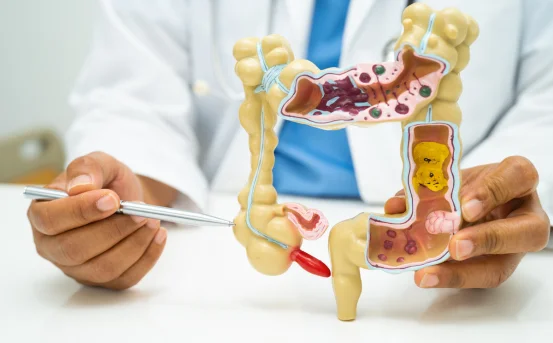Introduction
Breathing is one of the most fundamental actions of human life. Yet, for some individuals, this simple act becomes a daily struggle due to a condition known as a deviated nasal septum. When the wall that divides the nasal cavity is off-center or crooked, it can lead to various problems such as nasal obstruction, frequent sinus infections, facial pain, and snoring. To correct this, a surgical procedure known as septoplasty is often recommended.
Septoplasty surgery is a corrective procedure that helps align the nasal septum properly to restore normal airflow and eliminate associated complications. Here will help you understand what is septoplasty surgery , how it works, who needs it, and what you can expect before, during, and after the procedure.
What is Septoplasty?
Septoplasty is a surgical procedure that corrects a deviated nasal septum. The nasal septum is the thin wall made of cartilage and bone that separates the two nostrils. When this wall is shifted to one side known as deviation it can obstruct airflow, leading to breathing difficulties and frequent nasal congestion. Septoplasty straightens the septum, thereby improving nasal airflow and reducing symptoms.
The surgery is typically performed through the nostrils without external cuts or scars, making it a minimally invasive option. The goal of the procedure is to create an open nasal passage that allows for normal breathing and reduces the risk of sinus complications.
Why is Septoplasty Done?
Septoplasty is not done for cosmetic reasons but purely for functional improvements. The need for septoplasty arises when the deviated septum causes:
- Difficulty in breathing through the nose
- Chronic sinusitis
- Recurrent nasal infections
- Frequent nosebleeds
- Snoring or sleep apnea
- Persistent nasal congestion not relieved by medication
In such cases, medications may offer temporary relief, but surgery is often the only long-term solution.
Who Needs Septoplasty?
Not everyone with a deviated septum requires surgery. In fact, mild deviations are common and usually do not cause symptoms. However, septoplasty is considered when:
- The nasal obstruction affects quality of life.
- Medications like nasal sprays or antihistamines no longer help.
- You have frequent sinus infections or chronic sinusitis.
- You experience sleep disturbances due to nasal blockage.
- One nostril is significantly smaller or obstructed.
A thorough evaluation by an ENT (ear, nose, and throat) specialist, including nasal endoscopy or imaging tests like CT scans, helps determine if you are a suitable candidate for septoplasty.
The Septoplasty Procedure: How It’s Done
Septoplasty is typically performed under local or general anesthesia, depending on the complexity and patient preference. Here’s how the procedure generally goes:
- Preparation :- You will be asked to stop certain medications and avoid eating or drinking for several hours before surgery.
- Anesthesia :- Either local anesthesia with sedation or general anesthesia will be administered.
- Surgical Access: The surgeon makes an incision inside the nostrils to access the septum, ensuring no visible scarring.
- Correction :- The deviated portions of the septum whether bone or cartilage are either removed or reshaped. Sometimes, cartilage grafts are used to support the newly aligned septum.
- Closure :- The incision is closed with absorbable sutures. In many cases, soft silicone splints may be inserted to support the septum during healing.
- Duration :- The surgery typically takes 30 to 90 minutes.
Postoperative Recovery and Expectations
Although septoplasty is a routine procedure, recovery is essential for the best results. Most people can go home the same day.
- Initial Days :- You may experience mild bleeding, congestion, or discomfort. Pain is usually managed with over-the-counter medications.
- Splint Removal :- If splints are placed, they are usually removed within a week.
- Healing :- Full recovery takes a few weeks, although improvements in breathing may be noticeable sooner.
- Follow-up :- A series of follow-up visits are scheduled to monitor healing and rule out complications.
Risks and Complications
Like any surgery, septoplasty has its risks, although serious complications are rare:
- Bleeding
- Infection
- Change in nasal shape
- Septal perforation (a small hole in the septum)
- Decreased sense of smell (temporary in most cases)
- Need for revision surgery in rare cases
Discussing these risks with your surgeon beforehand ensures that you’re making an informed decision.
When to See a Doctor
If you have been experiencing chronic nasal congestion, facial pain, or snoring that disrupts sleep, it may be time to consult an ENT specialist. Early evaluation and diagnosis can prevent complications and improve your quality of life.
Conclusion
Septoplasty surgery is more than just a medical intervention it’s a path to better breathing, restful sleep, and overall improved well-being. Whether it’s due to chronic sinus issues, breathing difficulty, or recurring infections, a deviated septum can have a profound impact on daily life. Septoplasty offers a safe and effective solution for those who do not respond well to medications or other conservative treatments.
By understanding what the procedure involves, what to expect before and after surgery, and the potential benefits and risks, patients can approach septoplasty with clarity and confidence. If you or a loved one is struggling with the symptoms of a deviated septum, consider consulting an ENT specialist to see if septoplasty is the right choice.























